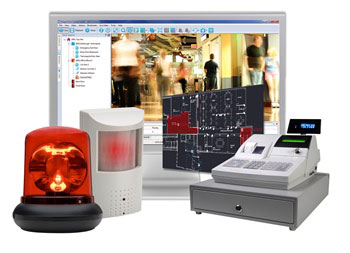
3 steps airport security teams should take to maximize efficiency for long-term success
Imagine the scene: relaxed passengers moving swiftly through airport security without any queues, taking time to rest at a conveniently located restaurant, browsing their favourite retail outlet (perhaps picking up a few items) as they stroll through a spacious, airy and comfortable terminal before safely and calmly boarding their flight.
Sounds ideal, right? Yet many passengers can still find airports a challenging experience.
The good news is that creating a better experience does not require a whole new system. While an airport security system is primarily designed to ensure staff and passengers remain safe, they can also be used to enhance the efficient running of the wider airport. We spoke to airport security expert Jurgen Klijn and have identified three steps you can take to use your airport security to achieve wider efficiency and commercial success.
Step 1: View the entire customer journey with an end-to-end system
Airport security operators are unable to make efficiency improvements if they cannot see what is going on in every terminal. If a passenger leaves their bag in the security hall and does not realize until they’ve reached the departure lounge: how long does it take to find the camera footage required to resolve the incident?
This task is difficult for airport security teams who manage multiple security systems for different buildings, which is common because many airports have gradually added terminals over the past decade. Operators who have to switch between different platforms to find the information they need take longer to reunite the bag with its owner. Jurgen Klijn, Senior Sales Director for North Europe at IndigoVision remarks:
The highest efficiency is reached if teams operate their security in one system, all from one room.
Simpler processes are more efficient. By investing in an end-to-end security solution, airport management teams combine all of the required components into one system. A larger initial investment might be required to implement the project but the efficiency benefits are highly impressive, improving overall safety and making financial savings. Read our guide to Airport security to learn more about why now, more than ever, airports need to review their security system.
Operators who manage all of an airport’s cameras, alarms and third party systems in a single user interface respond faster to incidents. Using the example of the missing luggage, a security operator working on one user interface can much more easily pull up camera footage from different parts of the airport and find the information they need to reunite the bag with its owner.
The passenger gets their property back more quickly and the security operator takes less time doing so: it’s a win-win situation.
Step 2: Intervene early in incidents to minimize passenger disruption
Large airport security systems consist of thousands of cameras. It is just not possible to monitor them all live, 24/7. Thousands of passengers pass through international airports each day; it’s difficult for operators to immediately see if one person is behaving suspiciously.
This is where video analytics can help to improve the passenger experience by making security processes more efficient, as Jurgen Klijn explains:
At any given time, there might be 20 cameras where something is happening that is out of the ordinary. You need to be able to look at those 20 incidents at speed – because that’s what your team can cope with – and decide if there's something to follow up with, or not. Analytics can help a lot in streamlining the process.
In-built camera analytics alert operators to events that are happening. Instead of one operator monitoring a corridor that is empty 99.9% of the time, video analytics send an alert if movement is detected, such as an intruder in a restricted area. When this is duplicated on hundreds of cameras, it saves a huge amount of hours for operators.
It also means that the vast majority of people in the airport - who are just there to relax before their flight - can be left to do so in peace.
A fire alarm in an airport can force the evacuation of an entire terminal building (leading to inconvenienced passengers, congested terminals and lost airport revenue). To reduce this risk, in-built camera analytics can send an alert to the Video Management Software (VMS) if unexpected activity is detected near a fire alarm. This enables operators to dispatch security guards to investigate. If it is a false alarm, for example if an individual has tampered with the fire alarm, it can avoid the need to completely evacuate the terminal and inconvenience hundreds of passengers.
Step 3: Use Business Intelligence to improve customer retention
The ability to detect patterns in data from security systems is now an incredibly useful tool to improve efficiency, make the passenger experience more enjoyable and even increase revenue at airports. Jurgen Klijn explains:
Business Intelligence provides airports with predictive tools. If they can analyze what happened in the past five weeks or compare it to the first quarter of last year, it helps them predict the future and plan for longer periods.
Heat maps and dwell times from Artificial Intelligence (AI) software can help airport management teams decide where to place concession stands and locate shopping outlets in the terminal. Identifying the busiest areas of the airport with the highest potential for customer footfall can help the airport management team to position rent opportunities for retail outlets.
Business Intelligence also helps to improve the passenger experience through the airport, which is important because of the need to encourage customers to return. Strong customer retention in turn improves the long-term prospects of the airport. If customers do not enjoy their experience in a particular airport, they are likely to choose to depart elsewhere in future. To monitor passenger flow through the airport, security teams can use heat maps and dwell time analytics to identify congested areas. They can make decisions which are based on security data, such as opening additional security lanes or reorganizing seating areas in densely populated areas of the terminal buildings.
Airport security teams who follow these 3 steps to identify and implement systems that prioritize efficiency will not only improve their response to incidents but also improve the long-term commercial success of the airport itself.








